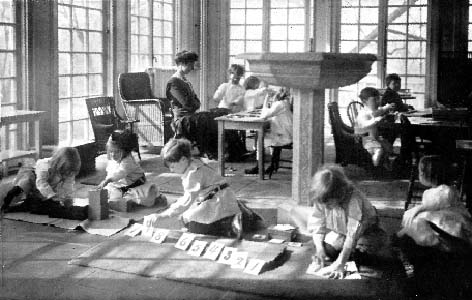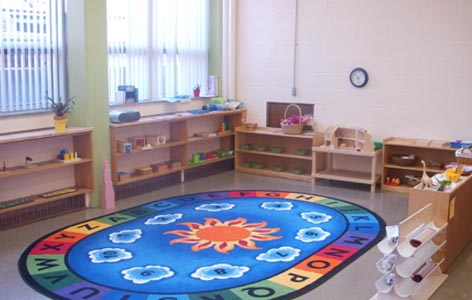Philosophy
The Montessori Philosophy
Maria Montessori’s philosophy of education revolves around the uniqueness of the child. She viewed children as more than adults to be. She believed, “we ought not to consider the child and the adult merely as successive phases in the individual’s life. We ought rather to look upon them as two different forms of human life, going on at the same time and exerting upon one another a reciprocal influence.” Maria Montessori saw that not only is the child dependent on the adult for protection and care, but also the adult being dependent on the child for the future.

Montessori had great respect for children and as a result Montessori schools are designed with respect towards the child. The design of the schools benefit the developmental and social needs of the children as well as the adults who build them. They are built to not only appeal to a child’s sense of order and beauty but also to help the adult “see through the child’s eyes”.
While observing children Montessori saw that children have “sensitive periods” in their development. In these “sensitive periods” children are especially able to absorb and retain certain kinds of knowledge, especially knowledge regarding new skills. This observation of a child’s development is what the Montessori educational materials are based upon. These materials give children hands-on experience with cultural and academic concepts as well as practical activities.
Montessori viewed education as a natural process that develops in a prepared environment. She described her method of teaching as “an aid to life”, which enhances the goal of supporting the growth of a child as well as their independence.
Montessori Environment
The Montessori classroom is designed to support the developmental needs and interests of the children. There is no limit to what the children can learn. They are able to advance through the curriculum when they are ready and they aren’t limited by their peers. The materials in the Montessori schools have been researched and developed during their use in the classroom.

The individual teacher also brings materials that they have developed which are unique to the classroom. The teacher takes a great deal of time and care in designing the classroom so that the materials are arranged sequentially, children are comfortable in their workspace and so there is freedom of physical movement.